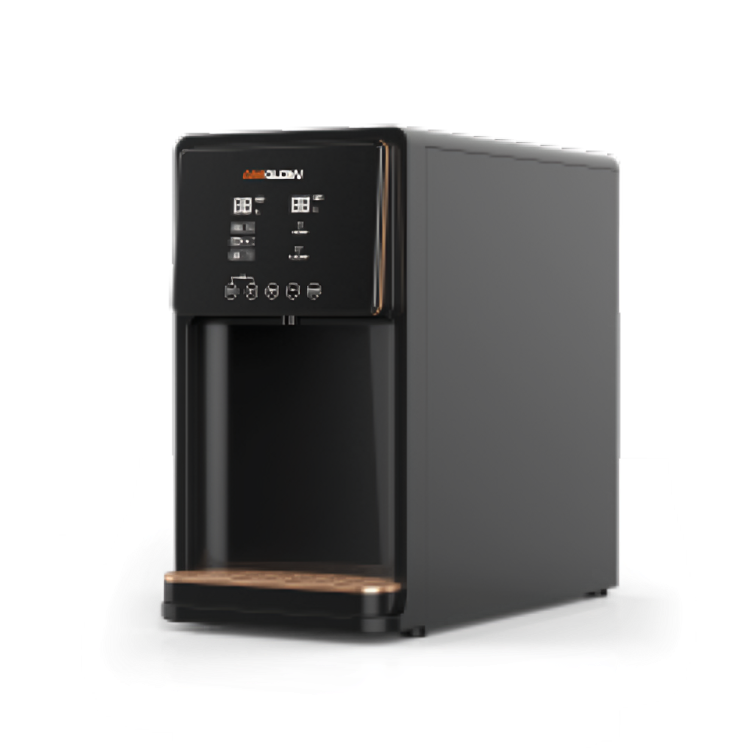Home / Blog / How Hot and Cold Water Dispenser Works?

How Hot and Cold Water Dispenser Works?
Hot and cold water dispensers have become common in homes and offices. They provide an easy way to access both hot and cold water without the need for separate appliances. In this blog, we will break down how these machines work.
Let’s explore the inner workings of a hot and cold water dispenser.
Hot and Cold Water Dispensers
A hot and cold water dispenser is a device that dispenses water at different temperatures. It provides hot water for tea, coffee, or soups. It also provides cold water for drinking. These machines are useful in homes, offices, and public spaces. They save time and make access to water more convenient.
Basic Components of a Water Dispenser
To understand how a hot cold water dispenser works, we need to know its main parts. Each has a role in heating, cooling, and dispensing the water.
Water Reserve
The water reservoir is where the water is kept; it refers to the location where the water is placed prior to heating or cooling. The size would vary, depending on the model.
Heating Element
The heating element heats the water to a specific temperature. This is usually located near the bottom of the dispenser. The element can quickly heat the water for instant use.
Cooling Unit
The cooling unit cools the water, thereby giving it cold water. It uses a compressor or a thermoelectric system to cool down the water.
Dispensing Taps
The taps allow a user to access the water outside of the machine. Dispensers are most likely to have hot and cold separate taps. Some models will have a third tap for room-temperature water.
Thermostat
The thermostat is the component that manages the temperature of the water. It ensures the water is kept at the correct hot or cold level.
Power Source
It requires electricity to operate. It accommodates the power source for the heating and cooling units.
How Does the Hot Water Function Work?
Its operation is quite straightforward. With the help of a push button for the hot water tap, the heating element is switched on. This heating element is essentially like the kind used in electric kettles, which can accelerate the heating of the water held in the storage reservoir to a predetermined temperature.
Here is how the hot water device functions in a step-by-step approach:
- From this reservoir, the water passes through a heating chamber.
- The heating element heats the water to about 90°C to 95°C.
- It constantly monitors and maintains the optimum level of temperature by controlling it.
- Once the water reaches the right temperature, it stays hot until you need it
- By tapping, the hot water comes out for your use
Some models even have child safety lock to avoid accidental burns. Overheating is also prevented in some by the inbuilt safety features.
How Does the Cold Water Function Work?
The cold water function works in a way similar to a refrigerator. The cooling unit inside the dispenser lowers the temperature of the water. There are two main types of cooling systems: compressor-based and thermoelectric.
Compressor-Based Cooling
Compressor-based cooling uses the same technology as a refrigerator. It involves a refrigerant, which absorbs heat from the water. The heat is then released outside the machine, leaving the water cold.
Here’s how compressor-based cooling works:
- The refrigerant is compressed, causing it to heat up
- The refrigerant passes through a condenser, where it cools down
- As it expands, it absorbs heat from the water, making the water cold
- The cold water is stored in the reservoir until needed
- When you press the tap, the chilled water flows out
Thermoelectric Cooling
Thermoelectric cooling is another method used in some water dispensers. It uses electricity to create a temperature difference.
Here’s how thermoelectric cooling works:
- A thermoelectric module creates a heat transfer between two sides of a plate
- One side absorbs heat from the water and transfers it to the other side
- The heat is released outside the machine, cooling the water
- The cold water is stored in the reservoir until it is dispensed
Both cooling methods have their advantages. Compressor-based systems are more efficient, while thermoelectric systems are quieter.
Water Filtration in Dispensers
Many hot and cold water dispensers come with built-in filters. These filters remove impurities and improve the taste of the water. The filtration system usually consists of carbon filters, sediment filters, or UV sterilization.
Here’s how the filtration process works:
The water passes through a carbon filter that removes chlorine, bad odors, and tastes
It then moves through a sediment filter, which removes particles like dirt and sand
Some dispensers use UV sterilization to kill bacteria and viruses in the water
The filtered water then goes to the reservoir, ready to be heated or cooled
Types of Hot and Cold Water Dispensers
There are different types of dispensers available. The most common types include:
Bottle-Type Dispensers
These are the most traditional types. They use large water bottles that are placed upside-down on top of the machine. The water flows into the reservoir by gravity.
Bottom-Load Dispensers
In these models, the water bottle is placed at the bottom of the machine. A pump draws the water from the bottle into the reservoir.
Point-of-Use Dispensers
Point-of-use dispensers connect directly to a water line. They provide a continuous supply of water without the need for bottles. These are commonly used in offices and commercial settings.
Maintenance and Cleaning
Maintenance on the hot and cold water dispenser must be in proper condition so that it will work right by keeping it hot and cold at all times. Periodic cleaning is necessary to avoid the buildup of dirt, minerals, and bacteria causing harm.
Here’s a simple guide to maintaining your water dispenser:
- Unplug the dispenser before cleaning
- Use a solution of vinegar and water to clean the reservoir and taps
- Remove and replace the filter according to the manufacturer’s instructions
- Wipe down the exterior with a damp cloth
- Clean the drip tray to prevent mold and odors
By following these steps, you can keep your dispenser clean and extend its lifespan.
Common Issues and Troubleshooting
Like any appliance, water dispensers can encounter issues. Here are some common problems and how to fix them:
Water is Not Hot or Cold: If the water is not hot or cold, check the power supply. Make sure the machine is plugged in and turned on. If the problem persists, it could be an issue with the thermostat or compressor.
Water Flow is Slow: Slow water flow can be caused by a clogged filter or a kinked water line. Cleaning or replacing the filter should solve this issue.
Leaks: Leaks can occur if the bottle or water line is not properly installed. Check for any cracks or loose connections.
Conclusion
Hot and cold water dispensers are convenient devices that provide instant access to hot or cold water. They work by using heating elements and cooling systems to adjust the water temperature. These machines also offer features like filtration and energy-saving modes. By understanding how they work, you can make the most of this useful appliance.
GOOGLE REVIEWS






